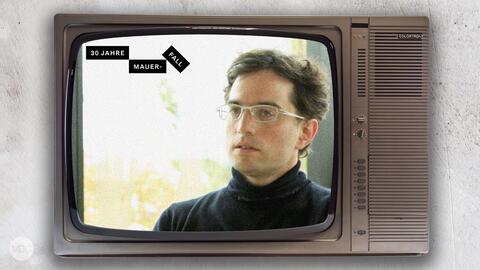
Historical event and commemoration
Dr. Emanuel Wyler, Research group on RNA Biology and Posttranscriptional Regulation

I was eight years old in 1989 and lived far away in Switzerland, so I only have vague images in my mind of the fall of the Wall: black-and-white pictures of Berlin from November 9 and 10 in the weekly magazine of the Tages-Anzeiger, a daily newspaper in Zurich. When I actually came to Berlin 22 years later, I moved into the neighborhood of an acquaintance – a doctoral student at the Charité who was the same age as me and had grown up in Prenzlauer Berg. Shortly afterwards, he went to Switzerland. Although he had been in the near vicinity when the border opened and remembers his mother going to the Bornholmer Strasse checkpoint “just to have a quick look,” his memories of that evening are similarly vague to mine.
The importance of keeping memory alive
While the event itself is starting to get shrouded in the fog of history, remembrance of November 9, 1989, is becoming more vivid and more important – and, interestingly, more controversial. Five years ago, when Germany celebrated a quarter of a century since the fall of the Wall, there was an official ceremony, and the route of the Wall was marked with illuminated balloons on poles. The 30-year anniversary this year, however, is overshadowed by serious topics like the heated discussions about East and West, about society in the former East, and the success that far-right party Alternative for Germany (AfD) is experiencing in eastern German states. November 9 is a date to reflect on topics like the mismanagement of the Treuhand agency set up in the GDR in 1990, the lack of respect given to former GDR citizens, and inequality in living standards.
A major research institution like the MDC must actively engage in important social and political debates.
This year, the MDC is also much more intensely occupied with the anniversary of the fall of the Wall than it was back in 2014. Texts like this one, videos, and the photo exhibition at Hannoversche Strasse 28 show how important commemoration of this date has become. A major research institution like the MDC must actively engage in important social and political debates. November 9, 1989, was also a turning point for the Buch campus, of course. Shortly after that date, three central institutes of the Academy of Sciences of the GDR were merged to create the Max Delbrück Center. Any debate about shaping today’s society (in the aftermath of November 9, 1989) must include science and scientists.
I’m a part of it all
But what is my role in all of this, as a biologist from another country? As I said, on the date itself I was much too young and lived too far away. But when it comes to commemorating that date, I’m certainly a part of it. Thanks to the doctoral student mentioned above, my home is in Prenzlauer Berg – a picture-book example of a district where “Easterners” who lived here for years have been “displaced” by people from other parts of Germany, Europe, and elsewhere. My workplace, the BIMSB building, is on the site of the former Permanent Representation of the Federal Republic of Germany in the GDR. If the Wall had not fallen, I would almost certainly not be living in Berlin now. While the West Berlin of the 1980s seems appealing, at least in hindsight, it must be said that German reunification gave science in Berlin a boost and a dynamism that has made the city an obvious choice of location for biologists looking to make new discoveries.
© picture alliance / 360-Berlin / Jens Knappe
